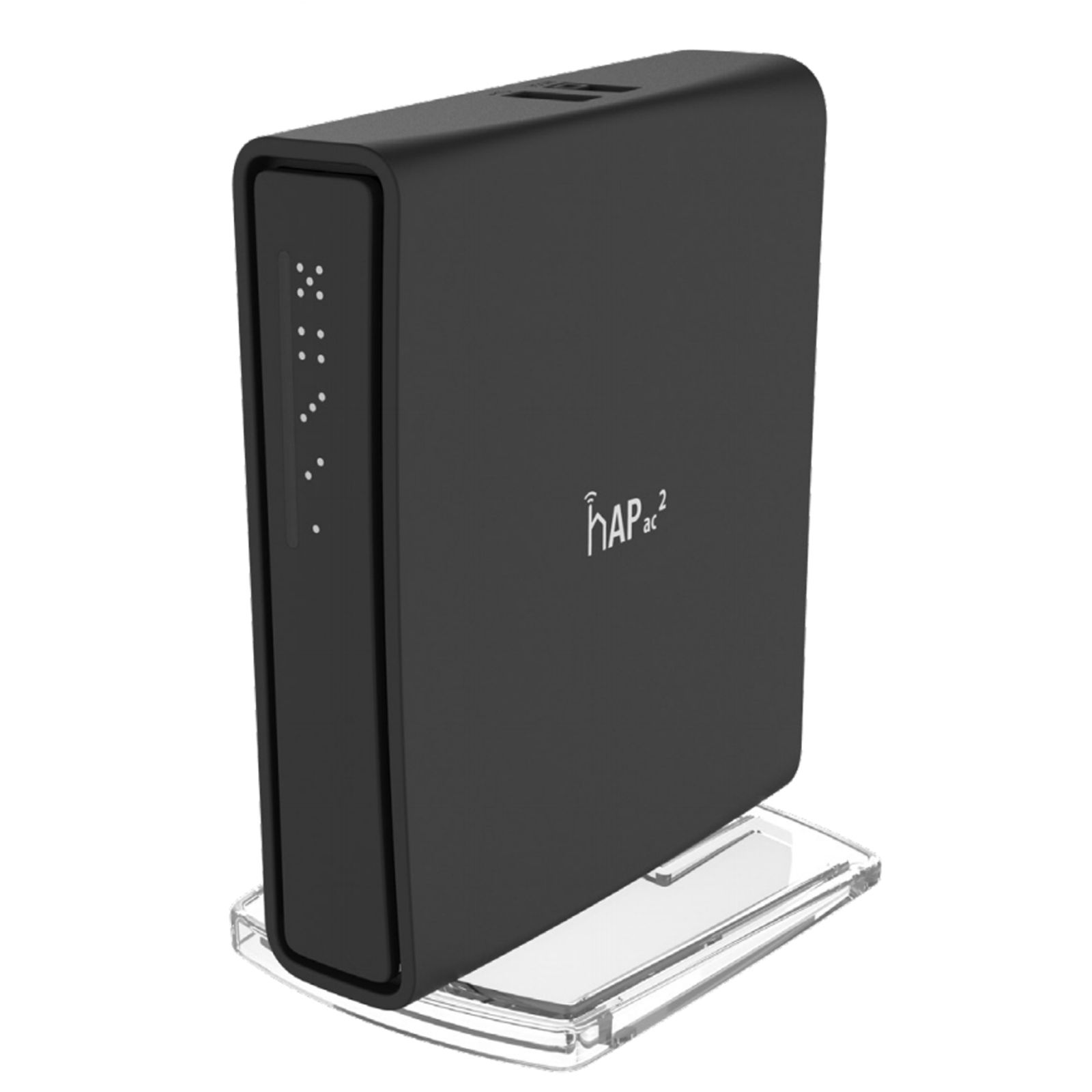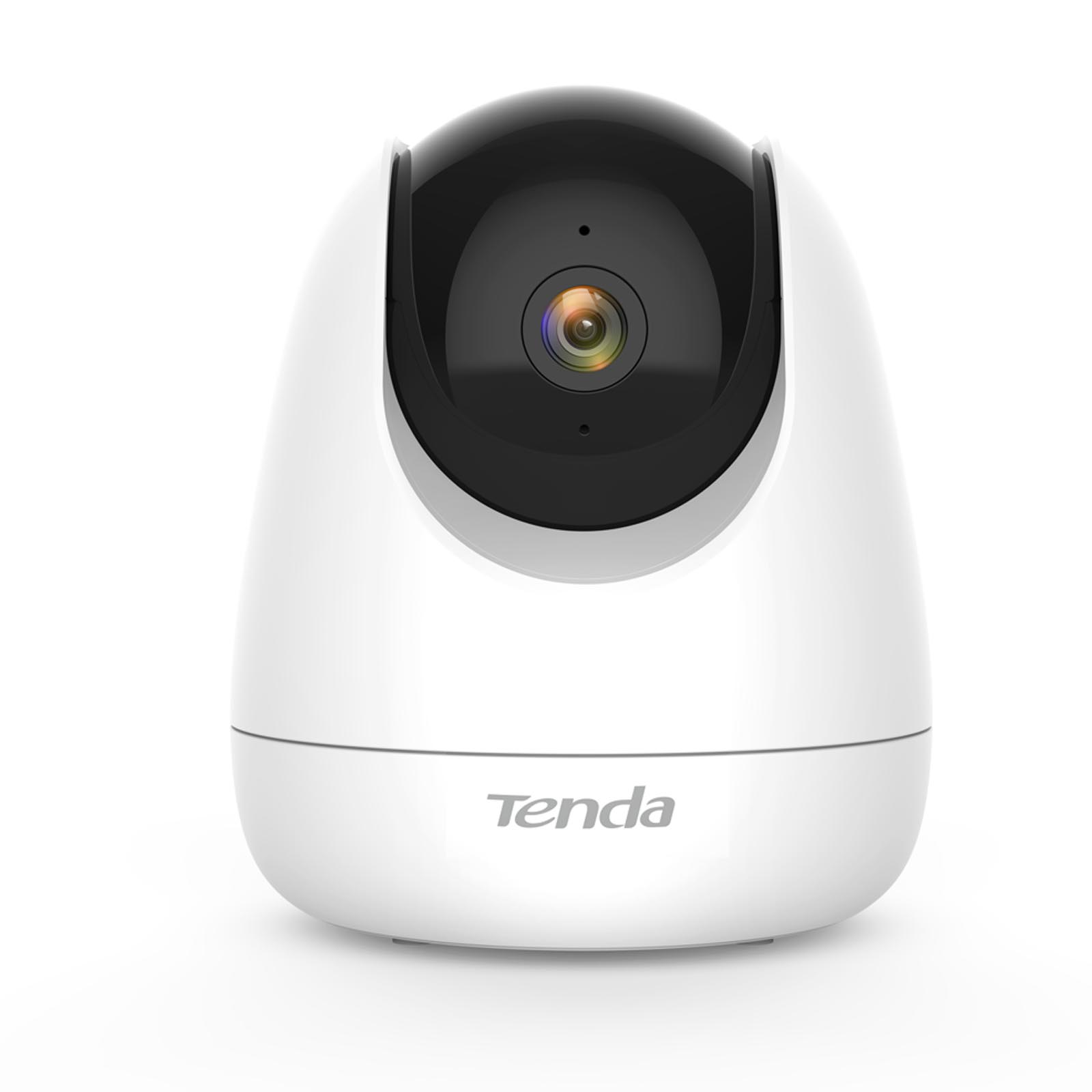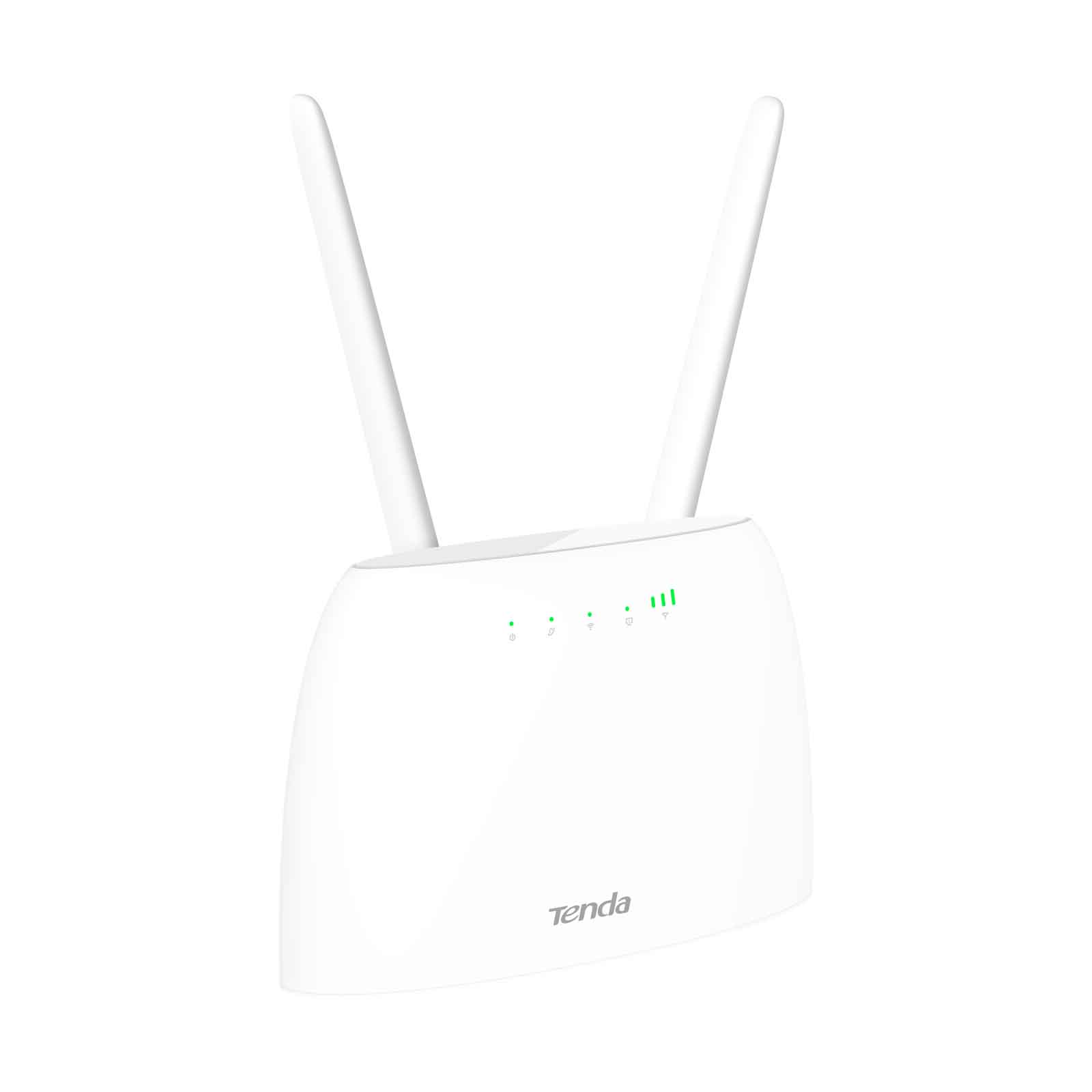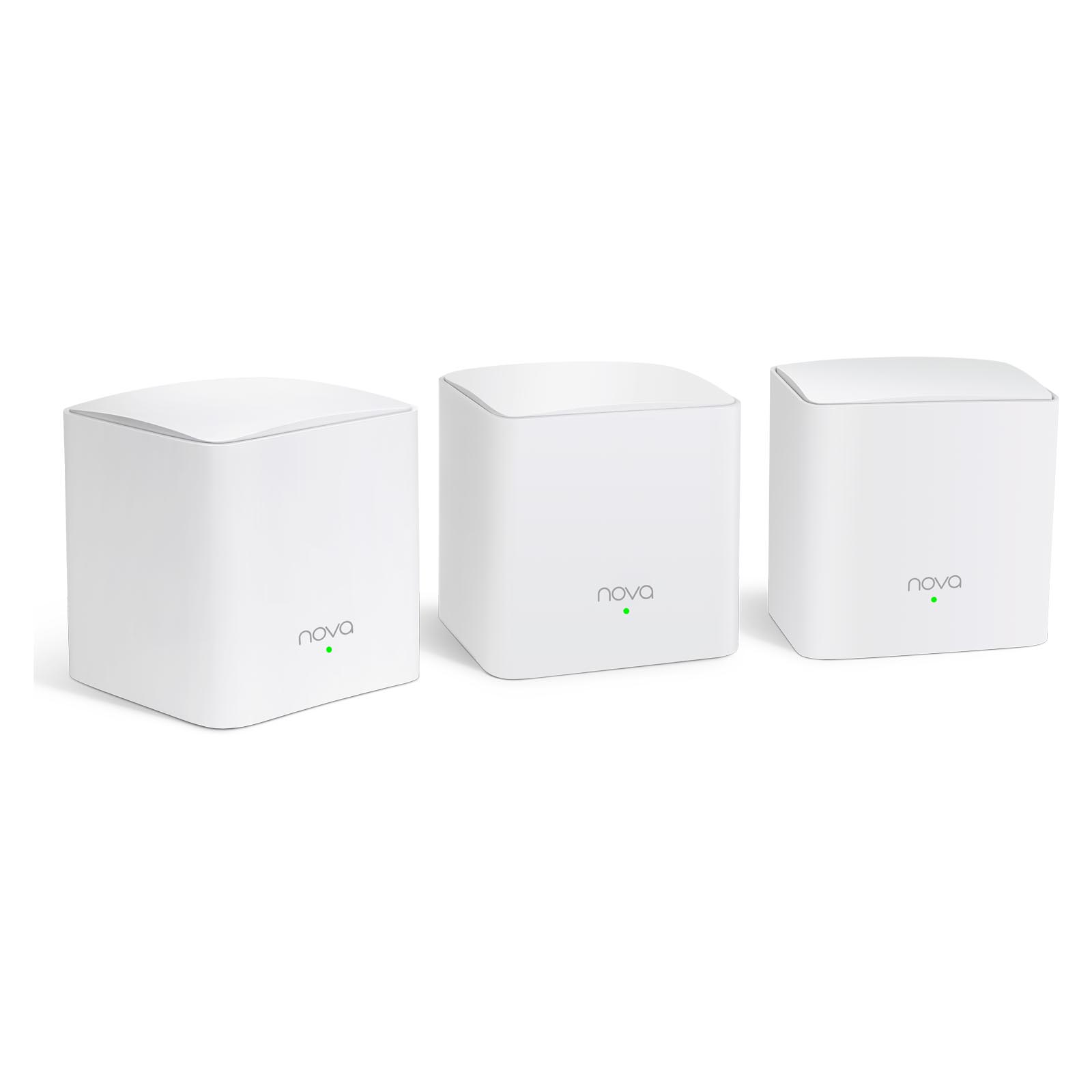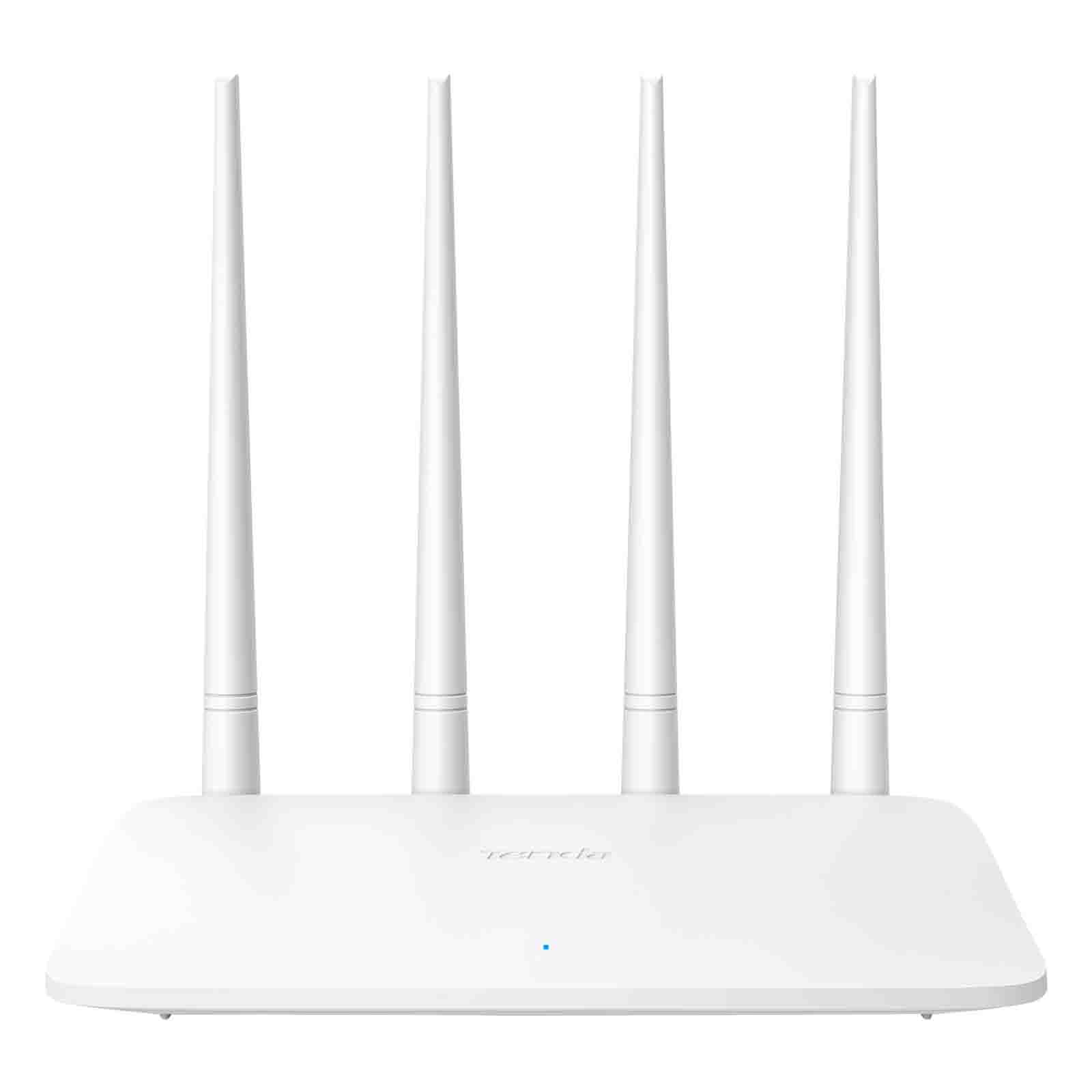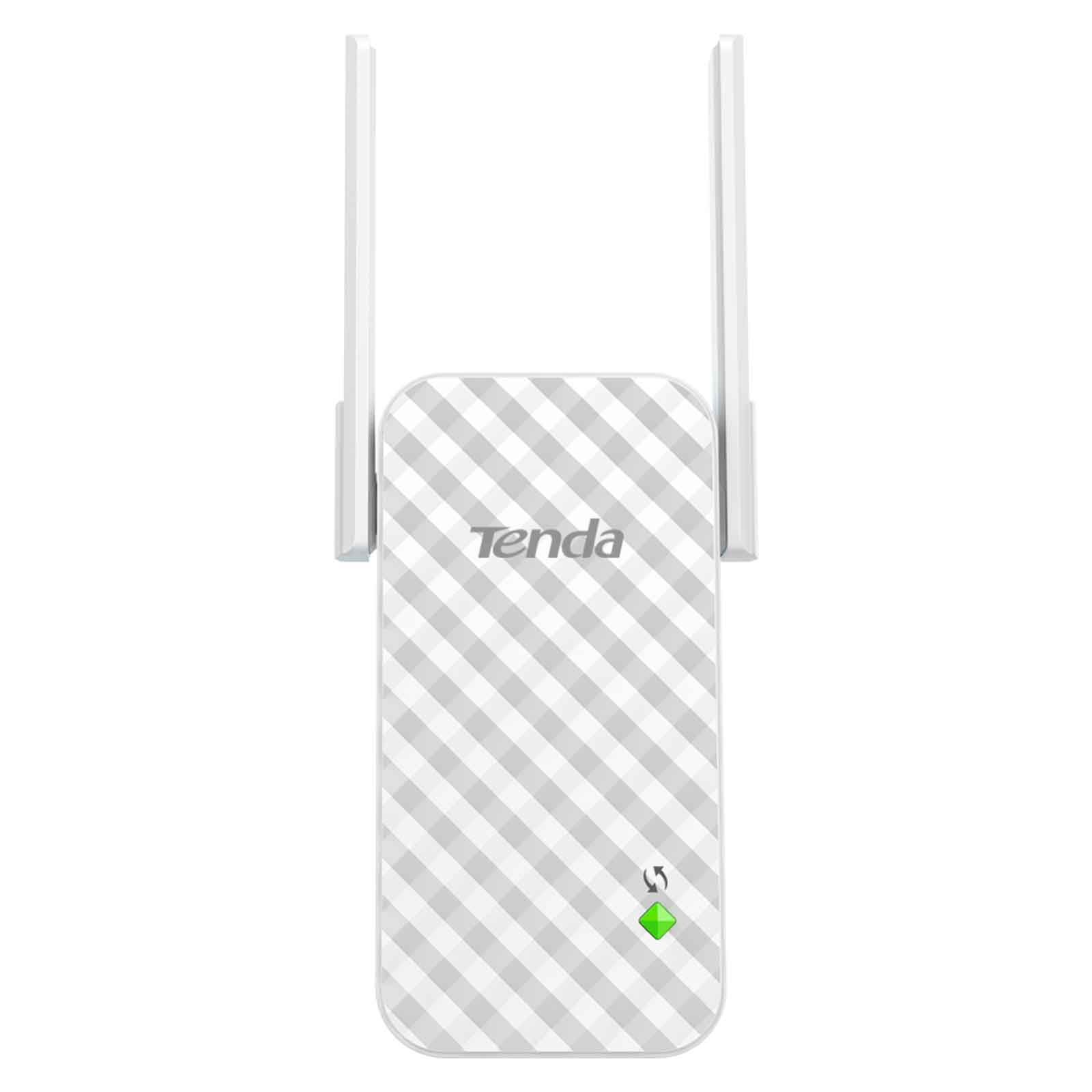Teltonika RUTC50 to solidny przemysłowy router 5G wyposażony w 5x portów Gigabit Ethernet, WiFi-6, Dual-SIM, port USB, GPS, wydajny procesor i oprogramowanie RutOS do zaawansowanych rozwiązań sieciowych
Teltonika RUTC50 to router 5G wyposażony w dwuzakresową technologię Wi-Fi 6 z MU-MIMO, zapewniającą ultra-wysokie prędkości komórkowe do 3,4 Gb/s. Ten router 5G jest również wyposażony w dwie karty SIM z automatycznym przełączaniem awaryjnym, 5x portów Gigabit Ethernet i GNSS do precyzyjnego śledzenia lokalizacji. RUTC50 obsługuje zarówno architektury SA, jak i NSA 5G i jest wstecznie kompatybilny z 4G (kat. 20) i 3G, zapewniając solidną i niezawodną wydajność.
Pierwsze wejście firmy Teltonika na arenę urządzeń sieciowych 5G okazało się ogromnym sukcesem. Router komórkowy RUTX50 5G zapewnia już najnowocześniejsze przemysłowe rozwiązania IoT z łącznością 5G na całym świecie, podobnie jak brama TRB500. Router komórkowy RUTM50 5G odniósł podobny sukces na rynku północnoamerykańskim, a ostatnio wylądował w Japonii i innych regionach, aby wyrobić sobie tam markę.
RUTC50 posiada dwuzakresowe Wi-Fi 6 z technologią multi-user MIMO (multiple-input and multiple-output). Wi-Fi 6, znane również jako 802.11ax, działa w pasmach 2,4 GHz i 5 GHz, a multi-user MIMO pozwala na wielościeżkową komunikację bezprzewodową, wykorzystując wielu użytkowników jako zasoby transmisyjne. W rezultacie sieć bezprzewodowa obsługiwana przez router RUTC50 5G jest szczególnie wyjątkowym rodzajem potęgi. Urządzenie może obsługiwać do 512 użytkowników, dzięki czemu idealnie nadaje się do rozwiązań na dużą skalę z większą liczbą bezprzewodowo podłączonych urządzeń końcowych.
Na przykład, ten bezprzewodowy router 5G jest doskonałym wyborem dla rozwiązań transportu publicznego, gdzie niezawodna łączność bezprzewodowa jest potrzebna dla personelu, pasażerów i urządzeń pokładowych, takich jak terminale biletowe. RUTC50 sprawdzi się również w aplikacjach smart city, takich jak floty kamer CCTV, systemy zarządzania ruchem, billboardy, aplikacje detaliczne i przedsiębiorstwa, które chcą zabezpieczyć swoją przyszłą łączność. Aplikacją wartą bardziej szczegółowego zbadania są duże wydarzenia typu pop-up, takie jak międzynarodowe pokazy samochodowe. Im większe wydarzenie, tym większa złożoność sieci. Wynika to z faktu, że setki urządzeń końcowych wymagają niezawodnej łączności o wysokiej przepustowości, niskich opóźnieniach i solidnych możliwościach bezprzewodowych obsługujących wszystkie urządzenia jednocześnie. Dla RUTC50 jest to jednak dziecinnie proste.
Router RUTC50 5G, umożliwiający korzystanie z sieci z wieloma użytkownikami, obsługuje zarówno architekturę SA, jak i NSA 5G, a także zawrotne prędkości komórkowe do 3,4 Gb/s, umożliwiając niezrównaną transmisję danych. W przypadku, gdy zasięg 5G nie jest dostępny w danym obszarze, RUTC50 jest również wstecznie kompatybilny z 4G (Cat 20) i 3G, zapewniając wysoką przepustowość i niskie opóźnienia nawet w niesprzyjających warunkach środowiskowych.
Zabezpieczeniem tej znakomitej łączności są funkcje redundancji sieci routera 5G. Wyposażony w dwa gniazda kart SIM, RUTC50 oferuje automatyczne przełączanie awaryjne, zapasową sieć WAN i inne scenariusze przełączania mające na celu utrzymanie nieprzerwanego połączenia - bez względu na wszystko.
Jeśli chodzi o interfejsy, RUTC50 posiada 5x gigabitowych portów RJ45, wejście cyfrowe, wyjście cyfrowe i port USB-A. Ten ostatni może być używany jako zastępczy port szeregowy do łączenia się ze starszymi urządzeniami, pomagając routerowi połączyć łączność przyszłości ze sprzętem z przeszłości. Mówiąc o GNSS, ten router 5G jest wyposażony we wszystkie kluczowe usługi precyzyjnej lokalizacji, w tym GPS, GLONASS, BeiDou, Galileo i QZSS.
Podobnie jak w przypadku innych routerów 5G Teltonika, lista obsługiwanych protokołów RUTC50 jest bardzo długa i obejmuje ulubieńców branży, takich jak Modbus TCP, MQTT, SMNP i HTTP. Komunikacja routera Wi-Fi 5G jest chroniona przez jego solidny profil cyberbezpieczeństwa, który obejmuje zintegrowaną zaporę ogniową, wiele metod uwierzytelniania i szyfrowania, separację VLAN opartą na portach i tagach oraz obsługę kluczowych przemysłowych usług VPN, takich jak ZeroTier, WireGuard, Stunnel i IPsec.
Teltonika RUTC50 wyposażony jest w dwurdzeniowy procesor ARM Cortex-A53 i stanowi ważny aspekt możliwości routera 5G dla wielu użytkowników. Samo urządzenie jest umieszczone w obudowie i panelach z anodyzowanego aluminium i może pracować w temperaturach od -40 °C do 75 °C. Mierzy 103,4 x 42,6 x 130,4 mm i waży 452 g. RUTC50 jest w pełni kompatybilny z systemem zdalnego zarządzania Teltonika (RMS), umożliwiając zdalne aktualizacje oprogramowania układowego i rozwiązywanie problemów, konfigurowalne niestandardowe alerty i automatyzację oraz wiele innych możliwości zdalnego zarządzania, monitorowania i dostępu. Oprócz RMS, ten router 5G obsługuje również inne rozwiązania chmurowe do zdalnego zarządzania, w tym FOTA, Azure IoT Hub, Cloud of Things, Cumulocity i ThingWorx.
Teltonika RUTC50 (RUTC50200000) obsługuje pasma:
- 5G NR: n1, n3, n5, n7, n8, n20, n28, n38, n40, n41, n75, n76, n77, n78
- 4G (LTE-FDD): B1, B3, B5, B7, B8, B20, B28, B32
- 4G (LTE-TDD): B38, B40, B41, B42, B43
- 3G: B1, B5, B8
Zawartość zestawu:
Najważniejsze cechy:
- 5G - Niezwykle wysokie prędkości komórkowe do 3,4 Gb/s
- SA i NSA - Obsługuje obie architektury w celu wykorzystania infrastruktury 5G
- Jednocyfrowe opóźnienie dla aplikacji o znaczeniu krytycznym
- Dwuzakresowe funkcje bezprzewodowe MIMO dla 512 użytkowników
- Zwiększona wydajność przetwarzania dla wielu użytkowników i aplikacji edge computing
- Wstecznie kompatybilny z technologiami sieci 4G (LTE CAT 20) i 3G
- Dual-band 802.11ax WiFi 6 o prędkości do 2978 Mb/s
- Dual SIM - Nieprzerwana komunikacja z automatycznym przełączaniem awaryjnym
- 5x portów Gigabit Ethernet o prędkości do 1000 Mb/s
- Port USB
- Anteny: GNSS (GPS), 4x Mobile, 3x WiFi
- System zdalnego zarządzania Teltonika - RMS
- Natychmiastowe przełączanie awaryjne
- Łatwy w użyciu, bezpieczny i bogaty w funkcje system operacyjny oparty na OpenWrt
MOBILE
- Mobile module: 5G Sub-6Ghz SA/NSA 2.4/3.4Gbps DL (4x4 MIMO), 900/550 Mbps UL (2x2); 4G (LTE) – LTE Cat 20 2.0Gbps DL, 210Mbps UL; 3G – 42 Mbps DL, 5.76Mbps UL
- 3GPP Release: Release 16
- SIM switch: 2 SIM cards, auto-switch cases: weak signal, data limit, SMS limit, roaming, no network, network denied, data connection fail, SIM idle protection
- Status: Signal strength (RSSI), SINR, RSRP, RSRQ, EC/IO, RSCP, Bytes sent/received, connected band, IMSI, ICCID, SIM provider, operator, network type, cell ID, LAC, TAC, ARFCN, UARFCN, EARFCN
- SMS: SMS status, SMS configuration, send/read SMS via HTTP POST/GET, EMAIL to SMS, SMS to EMAIL, SMS to HTTP, SMS to SMS, scheduled SMS, SMS autoreply, SMPP
- USSD: Supports sending and reading Unstructured Supplementary Service Data messages
- Black/White list: Operator black/white list (by country or separate operators)
- Multiple PDN: Possibility to use different PDNs for multiple network access and services
- Band management: Band lock, Used band status display
- SIM idle protection service: When working with devices with two SIM slots, the one not currently in use will remain idle until the device switches to it, meaning that no data is used on the card until then
- APN: Auto APN
- Bridge: Direct connection (bridge) between mobile ISP and device on LAN
- Passthrough: Router assigns its mobile WAN IP address to another device on LAN
- Framed routing: Framed routing: support an IP network behind 5G UE
WIRELESS
- Wireless mode: 802.11b/g/n/ac/ax (Wi-Fi 6) with data transmission rates up to 2402Mbps on 5GHz, 576Mbps on 2.4GHz (Dual Band, MU-MIMO)
- Wi-Fi security: WPA2-Enterprise - PEAP, WPA2-PSK, WPA-EAP, WPA-PSK, WPA3-SAE, WPA3-EAP, OWE; AES-CCMP, TKIP, Auto-cipher modes, client separation, EAP-TLS with PKCS#12 certificates, disable auto-reconnect
- SSID/ESSID: ESSID stealth mode
- WiFi users: Up to 512 simultaneous connections
- Wireless Connectivity Features: Wireless mesh (802.11s), fast roaming (802.11r), BSS transition management (802.11v), radio resource measurement (802.11k)
- Wireless MAC filter: Whitelist, blacklist
- Wireless QR code generator: Once scanned, a user will automatically enter your network without needing to input login information.
ETHERNET
- WAN: 1 x WAN port 10/100/1000 Mbps, compliance with IEEE 802.3, IEEE 802.3u, 802.3az standards, supports auto MDI/MDIX crossover
- LAN: 4 x LAN ports, 10/100/1000 Mbps, compliance with IEEE 802.3, IEEE 802.3u, 802.3az standards, supports auto MDI/MDIX crossover
NETWORK
- Routing: Static routing, Dynamic routing (BGP, OSPF v2, RIP v1/v2, EIGRP, NHRP), Policy based routing
- Network protocols: TCP, UDP, IPv4, IPv6, ICMP, NTP, DNS, HTTP, HTTPS, SFTP, FTP, SMTP, SSL/TLS, ARP, VRRP, PPP, PPPoE, UPNP, SSH, DHCP, Telnet, SMPP, SNMP, MQTT, Wake On Lan (WOL)
- VoIP passthrough support: H.323 and SIP-alg protocol NAT helpers, allowing proper routing of VoIP packets
- Connection monitoring: Ping Reboot, Wget Reboot, Periodic Reboot, LCP and ICMP for link inspection
- Firewall: Port forward, traffic rules, custom rules
- Firewall status page: View all your Firewall statistics, rules, and rule counters
- Ports management: View device ports, enable and disable each of them, turn auto-configuration on or off, change their transmission speed, and so on
- Network topology: Visual representation of your network, showing which devices are connected to which other devices
- DHCP: Static and dynamic IP allocation, DHCP relay, DHCP server configuration, status, static leases: MAC with wildcards
- QoS / Smart Queue Management (SQM): Traffic priority queuing by source/destination, service, protocol or port, WMM, 802.11e
- DDNS: Supported >25 service providers, others can be configured manually
- Network backup: Wi-Fi WAN, Mobile, VRRP, Wired options, each of which can be used as an automatic Failover
- Load balancing: Balance Internet traffic over multiple WAN connections
- Hotspot: Captive portal (hotspot), internal/external Radius server, Radius MAC authentication, SMS authorisation, internal/external landing page, walled garden, user scripts, URL parameters, user groups, individual user or group limitations, user management, 9 default customisable themes and optionality to upload and download customised hotspot themes
- SSHFS: Possibility to mount remote file system via SSH protocol
SECURITY
- Authentication: Pre-shared key, digital certificates, X.509 certificates, TACACS+, Radius, IP & login attempts block, time-based login blocking, built-in random password generator
- Firewall: Pre-configured firewall rules can be enabled via WebUI, unlimited firewall configuration via CLI; DMZ; NAT; NAT-T
- Attack prevention: DDOS prevention (SYN flood protection, SSH attack prevention, HTTP/HTTPS attack prevention), port scan prevention (SYN-FIN, SYN-RST, X-mas, NULL flags, FIN scan attacks)
- VLAN: Port and tag-based VLAN separation
- Mobile quota control: Mobile data limit, customizable period, start time, warning limit, phone number
- WEB filter: Blacklist for blocking out unwanted websites, Whitelist for specifying allowed sites only
- Access control: Flexible access control of SSH, Web interface, CLI and Telnet
VPN
- OpenVPN: Multiple clients and a server can run simultaneously, 27 encryption methods
- OpenVPN Encryption: DES-CBC 64, RC2-CBC 128, DES-EDE-CBC 128, DES-EDE3-CBC 192, DESX-CBC 192, BF-CBC 128, RC2-40-CBC 40, CAST5-CBC 128, RC2-64-CBC 64, AES-128-CBC 128, AES-128-CFB 128, AES-128-CFB1 128, AES-128-CFB8 128, AES-128-OFB 128, AES-128-GCM 128, AES-192-CFB 192, AES-192-CFB1 192, AES-192-CFB8 192, AES-192-OFB 192, AES-192-CBC 192, AES-192-GCM 192, AES-256-GCM 256, AES-256-CFB 256, AES-256-CFB1 256, AES-256-CFB8 256, AES-256-OFB 256, AES-256-CBC 256
- IPsec: IKEv1, IKEv2, with 14 encryption methods for IPsec (3DES, DES, AES128, AES192, AES256, AES128GCM8, AES192GCM8, AES256GCM8, AES128GCM12, AES192GCM12, AES256GCM12, AES128GCM16, AES192GCM16, AES256GCM16)
- GRE: GRE tunnel, GRE tunnel over IPsec support
- PPTP, L2TP: Client/Server instances can run simultaneously, L2TPv3, L2TP over IPsec support
- Stunnel: Proxy designed to add TLS encryption functionality to existing clients and servers without any changes in the program’s code
- DMVPN: Method of building scalable IPsec VPNs
- SSTP: SSTP client instance support
- ZeroTier: ZeroTier VPN client support
- WireGuard: WireGuard VPN client and server support
- Tinc: Tinc offers encryption, authentication and compression in it's tunnels. Client and server support.
- Tailscale: Tailscale offers speed, stability, and simplicity over traditional VPNs. Encrypted point-to-point connections using the open source WireGuard protocol
OPC UA
- Supported modes: Client, Server
- Supported connection types: TCP
MODBUS
- Supported modes: Server, Client
- Supported connection types: TCP, USB
- Custom registers: MODBUS TCP custom register block requests, which read/write to a file inside the router, and can be used to extend MODBUS TCP Client functionality
- Supported data formats: 8-bit: INT, UINT; 16-bit: INT, UINT (MSB or LSB first); 32-bit: float, INT, UINT (ABCD (big-endian), DCBA (little-endian), CDAB, BADC), HEX, ASCII
DATA TO SERVER
- Protocol: HTTP(S), MQTT, Azure MQTT, Kinesis
- Data to server: Extract parameters from multiple sources and different protocols, and send them all to a single server
MQTT GATEWAY
- Modbus MQTT Gateway: Allows sending commands and receiving data from MODBUS Server through MQTT broker
DNP3
- Supported modes: Station, Outstation
- Supported connection: TCP
DLMS
- DLMS Support: DLMS - standard protocol for utility meter data exchange
- Supported modes: Client
- Supported connection types: TCP, USB
API
- Teltonika Networks Web API (beta) support: Expand your device's possibilities by using a set of configurable API endpoints to retrieve or change data. For more information, please refer to this documentation: https://developers.teltonika-networks.com
MONITORING & MANAGEMENT
- WEB UI: HTTP/HTTPS, status, configuration, FW update, CLI, troubleshoot, multiple event log servers, firmware update availability notifications, event log, system log, kernel log, Internet status
- FOTA: Firmware update from server, automatic notification
- SSH: SSH (v1, v2)
- SMS: SMS status, SMS configuration, send/read SMS via HTTP POST/GET
- Call: Reboot, Status, Mobile data on/off, Output on/off, answer/hang-up with a timer, Wi-Fi on/off
- Email: Receive email message status alerts of various services
- TR-069: OpenACS, EasyCwmp, ACSLite, tGem, LibreACS, GenieACS, FreeACS, LibCWMP, Friendly tech, AVSystem
- MQTT: MQTT Broker, MQTT publisher
- SNMP: SNMP (v1, v2, v3), SNMP Trap
- JSON-RPC: Management API over HTTP/HTTPS
- RMS: Teltonika Remote Management System (RMS)
IOT PLATFORMS
- Cloud of Things: Allows monitoring of: Device data, Mobile data, Network info, Availability
- ThingWorx: Allows monitoring of: WAN Type, WAN IP, Mobile Operator Name, Mobile Signal Strength, Mobile Network Type
- Cumulocity: Allows monitoring of: Device Model, Revision and Serial Number, WAN Type and IP, Mobile Cell ID, ICCID, IMEI, Connection Type, Operator, Signal Strength
- Azure IoT Hub: Can send device IP, Number of bytes send/received, Temperature, PIN count to Azure IoT Hub server, Mobile connection state, Network link state, IMEI, ICCID, Model, Manufacturer, Serial, Revision, IMSI, SIM State, PIN state, GSM signal, WCDMA RSCP, WCDMA EC/IO, LTE RSRP, LTE SINR, LTE RSRQ, CELL ID, Operator, Operator number, Connection type
SYSTEM CHARACTERISTICS
- CPU: Mediatek, Dual-core, 1.3 GHz, ARM Cortex A53
- RAM: 512MB DDR3
- FLASH storage: 16MB serial NOR flash, 512MB serial NAND flash
FIRMWARE / CONFIGURATION
- WEB UI: Update FW from file, check FW on server, configuration profiles, configuration backup
- FOTA: Update FW
- RMS: Update FW/configuration for multiple devices at once
- Keep settings: Update FW without losing current configuration
- Factory settings reset: A full factory reset restores all system settings, including the IP address, PIN, and user data to the default manufacturer's configuration
FIRMWARE CUSTOMISATION
- Operating system: RutOS (OpenWrt based Linux OS)
- Supported languages: Busybox shell, Lua, C, C++
- Development tools: SDK package with build environment provided
- GPL customization: You can create your own custom, branded firmware and web page application by changing colours, logos, and other elements in our firmware to fit your or your clients’ needs
LOCATION TRACKING
- GNSS: GPS, GLONASS, BeiDou, Galileo and QZSS
- Coordinates: GNSS coordinates via WebUI, SMS, TAVL, RMS
- NMEA: NMEA 0183
- NTRIP: NTRIP protocol (Networked Transport of RTCM via Internet Protocol)
- Server software: Supported server software TAVL, RMS
- Geofencing: Configurable multiple geofence zones
USB
- Data rate: USB 2.0
- Applications: Samba share, USB-to-serial
- External devices: Possibility to connect external HDD, flash drive, additional modem, printer, USB-serial adapter
- Storage formats: FAT, FAT32, exFAT, NTFS (read-only), ext2, ext3, ext4
INPUT / OUTPUT
- Input: 1 x Digital Input, 0 - 6 V detected as logic low, 8 - 50 V detected as logic high
- Output: 1 x Digital Output, Open collector output, max output 50 V, 300 mA
- Events: Email, RMS, SMS
- I/O juggler: Allows to set certain I/O conditions to initiate event
POWER
- Connector: 4-pin industrial DC power socket
- Input voltage range: 9 - 50 VDC, reverse polarity protection, voltage surge/transient protection
- PoE (passive): Possibility to power up through LAN1 port, not compatible with IEEE802.3af, 802.3at and 802.3bt standards, Mode B, 9 - 30 VDC
- Power consumption: Idle: < 4.5 W, Max: < 13.5 W
PHYSICAL INTERFACES
- Ethernet: 5 x RJ45 ports, 10/100/1000 Mbps
- I/O’s: 1 x Digital Input, 1 x Digital Output on 4-pin power connector
- Status LEDs: 4 x WAN status LEDs, 3 x Mobile connection type, 3 x Mobile connection strength, 8 x LAN status, 1 x Power, 2 x 2.4G and 5G Wi-Fi, 2 x WAN status
- SIM: 2 x SIM slots (Mini SIM - 2FF), 1.8 V/3 V, external SIM holders, eSIM (Optional)
- Power: 1 x 4-pin power connector
- Antennas: 4 x SMA for Mobile, 3 x RP-SMA for Wi-Fi, 1 x SMA for GNSS
- USB: 1 x USB A port for external devices
- Reset: Reboot/User default reset/Factory reset button
- Other: 1 x Grounding screw
PHYSICAL SPECIFICATION
- Casing material: Anodized aluminum housing and panels
- Dimensions (W x H x D): 130.4 x 42.6 x 103.4 mm
- Weight: 452 g
- Mounting options: DIN rail, wall mount, flat surface (all require additional kit)
OPERATING ENVIRONMENT
- Operating temperature: -40 °C to 75 °C
- Operating humidity: 10% to 90% non-condensing
- Ingress Protection Rating: IP30
|









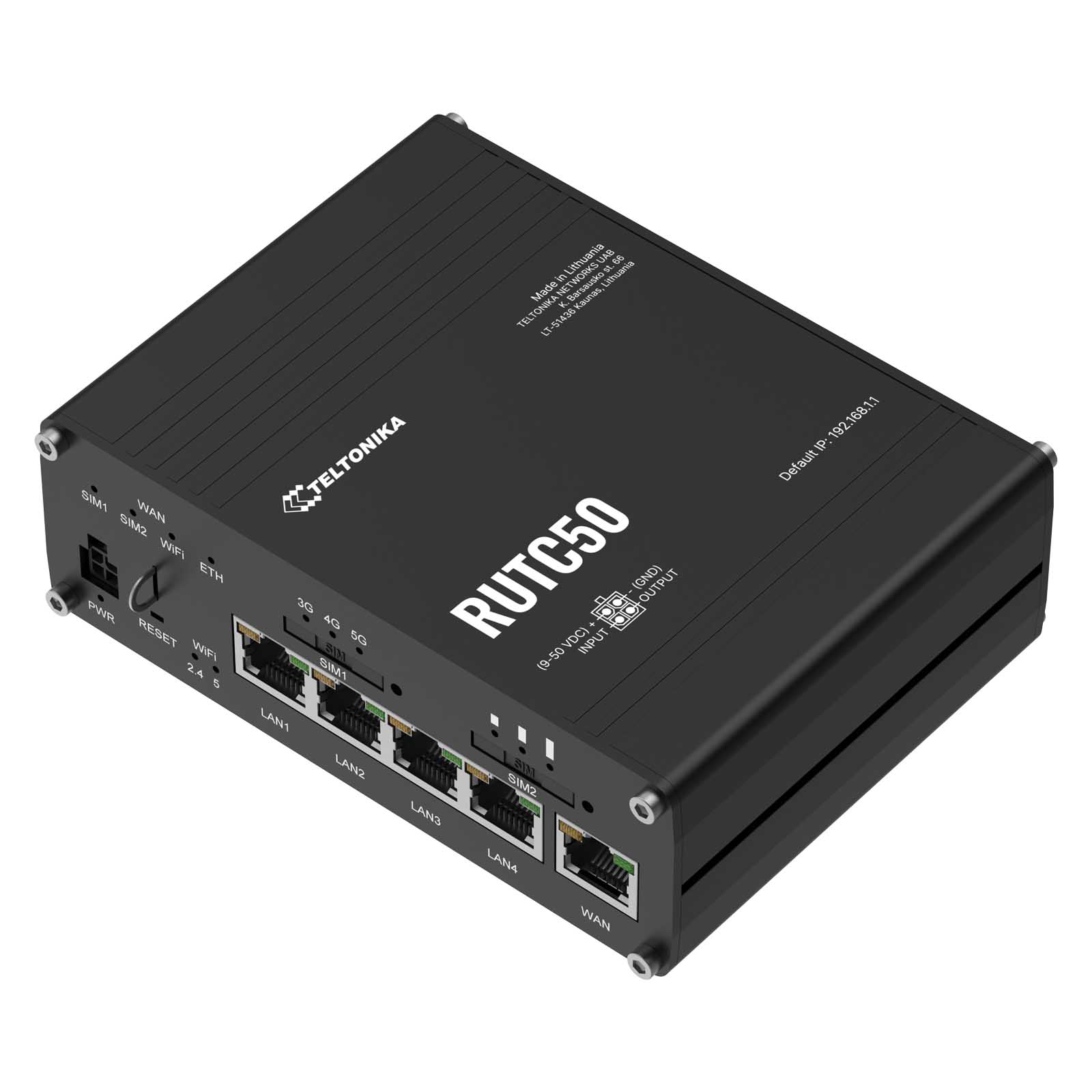

 Najtańsza dostawa: (pokaż wszystkie)
Najtańsza dostawa: (pokaż wszystkie)








